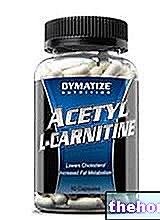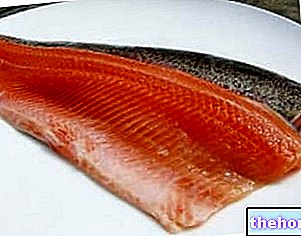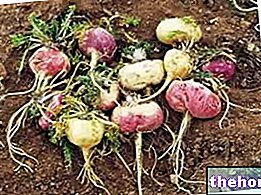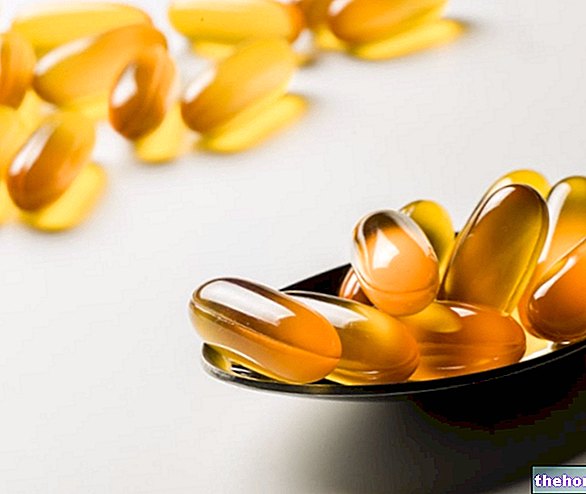Generality
Botany and description
Graviola is the name with which the Portuguese-speaking populations indicate the tree Annona muricata, evergreen fruiting belonging to the Annonaceae family, typical of tropical forests.
Uses

However, it is in the bark, leaves, roots, seeds and twigs that Graviola contains the greatest quantities of molecules with possible medical applications.
Indications
When to use Graviola?
The scientifically based indications for the use of Graviola are very different from those hypothesized or suggested by traditional medicine.
In fact, according to the folk medicine of the places of origin, Graviola supplements are indicated for gastric discomfort, fever or as a sedative. On the other hand, according to the most Western medical theories, we tend to recommend the use of Graviola for the treatment of: cancer, hyperuricemia, back pain, rheumatism, diabetes, immune disorders, eczema and other skin diseases. said that there is no scientific basis in this regard, so much so that - according to the FDA (Food and Drug Administration) - Graviola would not be useful in treating, curing or preventing any disease.
Properties and Effectiveness
What benefits has Graviola shown during the studies?
The characteristic pharmacological principles of Graviola are annonaceous acetogenins, molecules considered responsible for the surprising antitumor and antiviral effects, demonstrated in vitro, but still without confirmation in vivo. Let's go into more detail:
- One of these substances, cis-annonacin, has shown a cytotoxic effect (ability to damage cells, in this case cancer) against cell lines of colon adenocarcinoma, 10,000 times higher than that of Adriamycin (Doxorubicin), chemotherapy used in the treatment of a large family of cancers
- Graviola ethanolic extracts have proven effective against:
- Herpes symplex virus
- The protozoan responsible for leishmaniasis
- The freshwater mollusk Biomphalaria glabrata, host of the parasitic worm Schistosoma mansoni.
Unfortunately, there are still no large-scale studies that confirm the anticancer properties of Graviola on the human species, as demonstrated by the rather small amount of studies available on pubmed.
On the other hand, many internet sites tell of anecdotes about a failed attempt to patent some acetogenins by an "important pharmaceutical company, which after 7 years of studies abandoned the project due to the inability to synthesize specific molecules and patent them.
At the same time, the remarkable anticancer properties of Graviola and the lack of the typical side effects of chemotherapy drugs are praised (statement not entirely correct).
Beyond the most malicious considerations and marketing plans, we must not forget:
- The absence of significant clinical studies on humans;
- The possible interference with concomitant chemotherapy therapies;
- The difficulties in standardizing the active ingredients, linked to the countless factors that influence the yield of the plant, but also to possible sophistication.
Nutritional characteristics of the Graviola fruit
Graviola fruit contains significant amounts of Vitamin C, Vitamin B1 and Vitamin B2.

Nutritional values per 100 g
Power
66 kcal
Total carbohydrates
16.84 g
Simple sugars
13.54 g
Fat
0.3 g
Proteins
1.0 g
Fibers
3.3 g
Vitamins
Thiamine or B1
0.07 mg
6%
Riboflavin or B2
0.05 mg
4%
Niacin or PP or B3
0.9 mg
6%
Pantothenic acid or B5
0.253 mg
5%
Pyridoxine or B6
0.059 mg
5%
Folic acid
14.0 μg
4%
Choline
7.6 mg
2%
Ascorbic acid or C.
20.6 mg
25%
Minerals
Football
14.0 mg
1%
Iron
0.6 mg
5%
Magnesium
21.0 mg
6%
Phosphorus
27.0 mg
4%
Potassium
278.0 mg
6%
Sodium
14.0 mg
1%
Zinc
0.1 mg
1%
Doses and Directions for Use
How to use Graviola?
The preferred mode of administration for Graviola is internal, orally.
The most widely used pharmacological type is the dry extract capsule, weighing 650 mg, which must be taken in quantities of 1-1.5 g per day, possibly divided into two doses (the other ingredients of the capsules are: gelatin, flour rice, cellulose, stearic acid).
Another type of Graviola-based supplement is a syrup fortified with minerals and vitamins.
It is advisable to cycle the treatment, for example by taking the product for 3 weeks followed by a break.
Side effects
Graviola tends to produce non-negligible side effects, such as:
- Hypotension
- Vasodilation
- Cardiodepression (decreases myocardial excitability).
Among the "possible" side effects, however, we highlight:
- Nausea
- Vomiting (in high doses)
- Movement disorders, with myeloneuropathy and symptoms similar to those of Parkinson's disease.
In case of prolonged use, the antibacterial effect could alter the normal intestinal bacterial flora.
Contraindications
When should Graviola not be used?
The use of Graviola is not recommended in case of:
- Pregnancy
- Feeding time
- Hypotension
- Heart disease.
Caution is advised in patients undergoing drug treatment.
Pharmacological interactions
What drugs or foods can modify the effect of Graviola?
The class of drugs with which Graviola can interact is that of antihypertensive / hypotensive, which are divided into:
- Thiazide diuretics
- Potassium-sparing diuretics
- Osmotic diuretics
- Beta blockers
- ACE Inhibitors
- Sartans or AT-1 antagonists
- Calcium antagonists.
Precautions for Use
What do you need to know before taking Graviola?
As stated in the article, it is essential to say the least that any eventuality of use is previously discussed with expert health personnel informed on the methods of use, on the potential side effects and on the drug interactions of Graviola (in particular if you suffer from particular medical or psychiatric conditions).
We remind you once again that Graviola is not suitable for prolonged use.
Bibliography
- Oncology (Williston Park). 2008 Sep; 22: 1202. Complementary therapies, herbs, and other OTC agents. Cassileth B. Memorial Sloan-Kettering Cancer Center, New York, New York, USA.
- Padma P, Pramod NP, Thyagarajan SP, Khosa RL. Effect of the extract of Annona muricata and Petunia nyctaginiflora on Herpes simplex virus. J Ethnopharmacol. 1998; 61: 81-3.
- dos Santos AF,. Sant "Ana AE. Molluscicidal properties of some species of Annona. Phytomedicine. 2001; 8: 115-20.
- Jaramillo MC, Arango GJ, Gonzalez MC, Robledo SM, Velez ID. Cytotoxicity and antileishmanial activity of Annona muricata pericarp. Phytotherapy 2000; 71: 183-6.
- Liaw CC, Chang FR, Lin CY, Chou CJ, Chiu HF, Wu MJ et al. New cytotoxic monotetrahydrofuran annonaceous acetogenins from Annona muricata. J Nat.Prod. 2002; 65: 470-5.
- Oberlies NH, Chang CJ, McLaughlin JL. Structure-activity relationships of diverse Annonaceous acetogenins against multidrug resistant human mammary adenocarcinoma (MCF-7 / Adr) cells. J Med Chem. 1997; 40: 2102-6.
- Lannuzel A, Michel PP, Caparros-Lefebvre D, Abaul J, Hocquemiller R, Ruberg M. Toxicity of Annonaceae for dopaminergic neurons: potential role in atypical parkinsonism in Guadeloupe. Mov Disord. 2002; 17: 84-90.
- Roman G. Tropical myeloneuropathies revisited. Curr.Opin.Neurol 1998; 11: 539-44.
- Chen JC, Tsai CC, Chen LD, Chen HH, Wang WC. Therapeutic effect of gypenoside on chronic liver injury and fibrosis induced by CCl4 in rats. Am.J Chin Med. 2000; 28: 175-85.
- Muricoreacin and murihexocin C, mono-tetrahydrofuran acetogenins, from the leaves of Annona muricata (Graviola). Kim GS, Zeng L, Alali F, Rogers LL, Wu FE, Sastrodihardjo S, McLaughlin JL. Phytochemistry. 1998 Sep; 49: 565-71.PMID: 9747542 [PubMed - indexed for MEDLINE]
- Five novel mono-tetrahydrofuran ring acetogenins from the seeds of Annona muricata (Graviola). Rieser MJ, Gu ZM, Fang XP, Zeng L, Wood KV, McLaughlin JL. J Nat Prod. 1996 Feb; 59: 100-8.PMID: 8991944 [PubMed - indexed for MEDLINE] Related citations
- Additional bioactive acetogenins, annomutacin and (2,4-trans and cis) -10R-annonacin-A-ones, from the leaves of Annona muricata (Graviola). Wu FE, Zhao GX, Zeng L, Zhang Y, Schwedler JT, McLaughlin JL, Sastrodihardjo S. J Nat Prod. 1995 Sep; 58: 1430-7.PMID: 7494150 [PubMed - indexed for MEDLINE]
- New bioactive monotetrahydrofuran Annonaceous acetogenins, annomuricin C and muricatocin C, from the leaves of Annona muricata (Graviola). Wu FE, Zeng L, Gu ZM, Zhao GX, Zhang Y, Schwedler JT, McLaughlin JL, Sastrodihardjo S. J Nat Prod. 1995 Jun; 58: 909-15.PMID: 7673936 [PubMed - indexed for MEDLINE]
- Muricatocins A and B, two new bioactive monotetrahydrofuran Annonaceous acetogenins from the leaves of Annona muricata (Graviola). Wu FE, Zeng L, Gu ZM, Zhao GX, Zhang Y, Schwedler JT, McLaughlin JL, Sastrodihardjo S. J Nat Prod. 1995 Jun; 58: 902-8.PMID: 7673935 [PubMed - indexed for MEDLINE]
- Anti Cancer Activity on Graviola, an Exciting Medicinal Plant Extract vs Various Cancer Cell Lines and a Detailed Computational Study on its Potent Anti-Cancerous Leads. Paul J, Gnanam R, Jayadeepa RM, Arul L. Curr Top Med Chem. 2013; 13: 1666-73.
- Three new anti-proliferative Annonaceous acetogenins with mono-tetrahydrofuran ring from Graviola fruit (Annona muricata).
Sun S, Liu J, Kadouh H, Sun X1, Zhou K.
Bioorg Med Chem Lett. 2014 Jun 15; 24: 2773-6




























